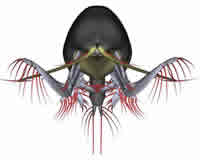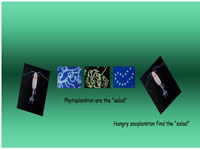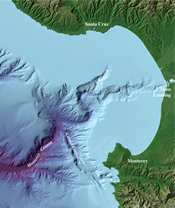


|
The Project
|
The Project
In the ocean, there are microscopic single-celled plants known as phytoplankton (phyto = plant and plankton = drifting). Phytoplankton are important for many reasons. They provide nearly half of the oxygen to our atmosphere through a process known as photosynthesis. Phytoplankton also are the main food source for small animals in the ocean. These small animals are known as zooplankton (zoo = animal and plankton = drifting). Zooplankton are important to the food web in the ocean, because zooplankton are eaten by larger oceanic animals. The health and growth of zooplankton depends on having enough phytoplankton cells available to eat. Because they are so small, these plants and animals are easily moved about by ocean currents. Oceanographers want to know where large amounts (concentrations) of these plants and animals can be found. Oceanographers also want to know why some locations in the ocean have high concentrations of plankton, and why other locations have low concentrations. In the last ten years, oceanographers have discovered that phytoplankton often form thin layers (less than 1 meter thick) in the upper 20-40 meters of the ocean. These layers extend several kilometers horizontally, and they last for many hours. Think of these thin layers as long salad bars in a restaurant, filled with phytoplankton. The customers at the salad bars are the zooplankton! This project investigates thin layers of plankton in the northern section of Monterey Bay, California. These shipboard measurements and experiments are part of a larger project funded by the Office of Naval Research. The larger project is called LOCO: Layered Organization in the Coastal Ocean.
Read more about the research questions asked by these oceanographers. Find out how they take their measurements and do their work: This project is funded by the Office of Naval Research, Grant # N00014-01-1-0277 to T.J. Cowles at Oregon State University
|






